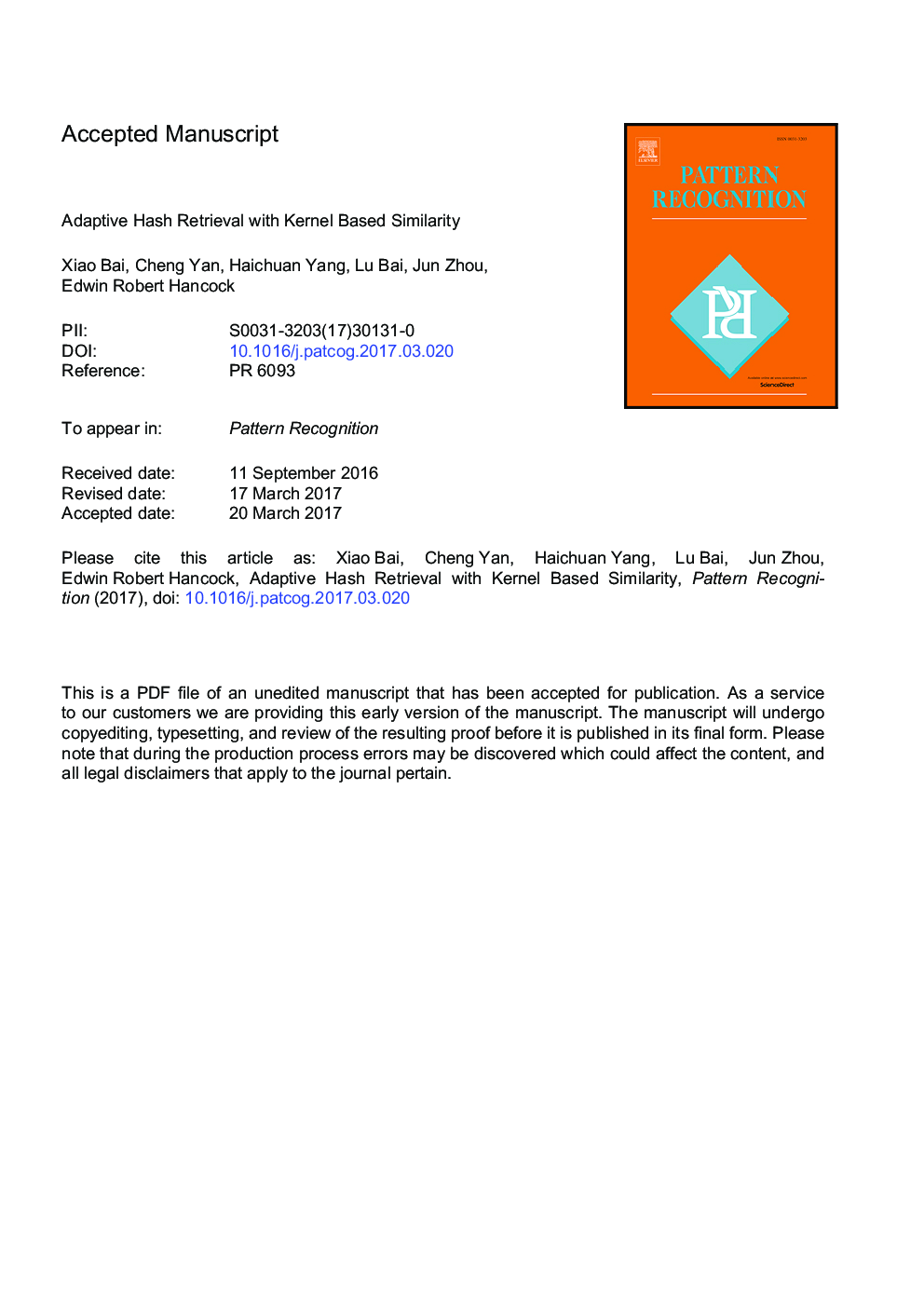| Article ID | Journal | Published Year | Pages | File Type |
|---|---|---|---|---|
| 6939647 | Pattern Recognition | 2018 | 34 Pages |
Abstract
Indexing methods have been widely used for fast data retrieval on large scale datasets. When the data are represented by high dimensional vectors, hashing is often used as an efficient solution for approximate similarity search. When a retrieval task does not involve supervised training data, most hashing methods aim at preserving data similarity defined by a distance metric on the feature vectors. Hash codes generated by these approaches normally maintain the Hamming distance of the data in accordance with the similarity function, but ignore the local details of the distribution of data. This objective is not suitable for k-nearest neighbor search since the similarity to the nearest neighbors can vary significantly for different data samples. In this paper, we present a novel adaptive similarity measure which is consistent with k-nearest neighbor search, and prove that it leads to a valid kernel if the original similarity function is a kernel function. Next we propose a method which calculates hash codes using the kernel function. With a low-rank approximation, our hashing framework is more effective than existing methods that preserve similarity over an arbitrary kernel. The proposed similarity function, hashing framework, and their combination demonstrate significant improvement when compared with several alternative state-of-the-art methods.
Related Topics
Physical Sciences and Engineering
Computer Science
Computer Vision and Pattern Recognition
Authors
Xiao Bai, Cheng Yan, Haichuan Yang, Lu Bai, Jun Zhou, Edwin Robert Hancock,
